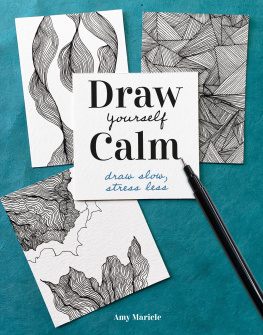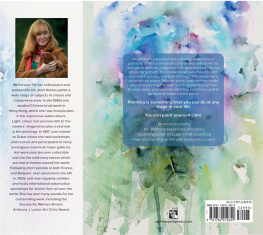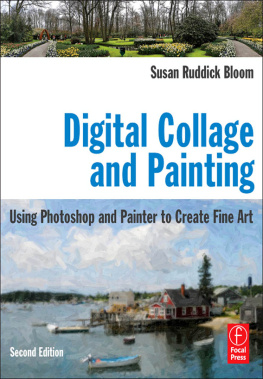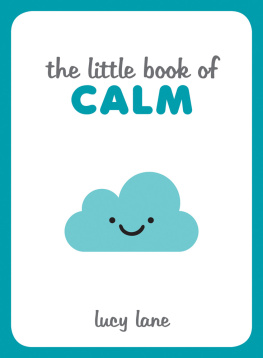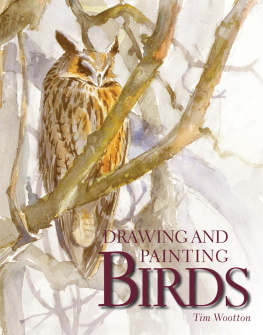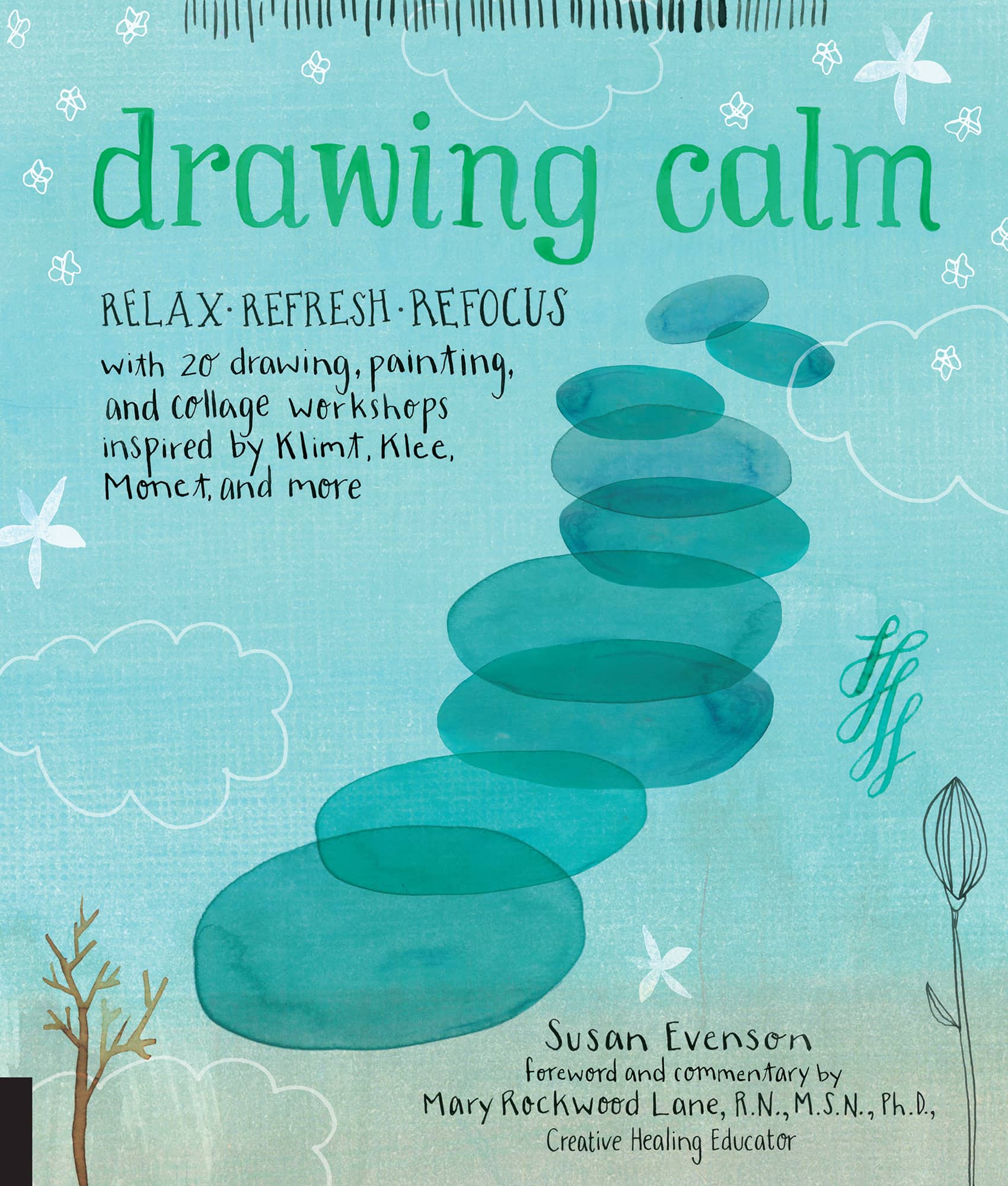drawing calm
RELAX, REFRESH, REFOCUS
with 20 Drawing, Painting, and Collage Workshops Inspired by Klimt, Klee, Monet, and More

SUSAN EVENSON


For my family, friends, and teachers, and those who are all three. With an extra grateful heart for Tegan, Rocket, and Ryan. This book is for anyone who is looking for a bit of artful calmwhatever your version of that may be.
FOREWORD
by Mary Rockwood Lane
I found I could say things with colors and shapes that I couldnt say any other waythings I had no words for.
Georgia OKeeffe
Even before I began my career in nursing and teaching, I knew there were ways that we could help heal ourselvesand creativity was one of them. The focus and shedding of self-consciousness that goes into the creative process helps us step away from ourselves and untangle the everyday concerns that weigh us down. The pleasure that comes from making something with our hands, immersing ourselves in color, and creating something that wasnt there beforethat truly reflects ourselveslifts us like almost nothing else can.
In the years that Ive worked with patients and with the University of Florida Arts in Medicine program, Ive seen my earlier thoughts confirmed a thousand times over. Creating art is a process of renewal, not just for patients, but for all of us. Looking at art inspires. It helps us think outside ourselves and, in the process, to rediscover the best of who we are. When we reclaim our inner artist, the inner healer emerges, tooits a force that lets the spirit take flight, and it spreads into every aspect of our lives, renewing our energy and self-esteem, while helping us discover our hidden gifts. That is what this book is about.
Drawing Calm brings art and renewal to life in ways that are accessible to everyone. Its a guide to finding creative time for you, however brief, each day through simple steps and inspiring art. Its a path to a new beginning, the start of a refreshing journey into the mind and spirit.
When I get started on a creative project, I like to begin by centering myself. Try it as you begin the projects in this book. Its simple, just take a moment to settle into your body and breathe deeply. Gently relax your entire body. In your minds eye, focus on the area around your heart. Breathe into your heart, feeling deep appreciation for someone or something you love. Allow this feeling to spread through your entire body. The body will begin to feel calmer as the heart opens. This is an invitation to create, to be inspired and let whatever emerges flow. Take the time to step away from the busy demands and stress of your life, and never forgetall of us are artists.
On the High Seas, Sunset at Pourville; Coucher de Soleil a Pourville, Pleine Mer, Claude Monet, French, (18401926). Oil on canvas, 1882. Private Collection/Bridgeman Images.
Mary Rockwood Lane, Ph.D., R.N., is an associate professor at the University of Florida College of Nursing, and associate faculty with the Watson Caring Science Institute, working in the field of creativity and spirituality in healing. She is cofounder and director emeritus of the Shands Arts in Medicine program at the University of Florida. She is the author of four books with Michael Samuels, M.D., including Healing with the Arts, Creative Healing, The Path of the Feather, and Spirit Body Healing.
INTRODUCTION
Maybe its because of a paintings rich palette, or the pattern of its brushstrokes, or the peace of a landscape view, but our response to art is often one of calm. Art can create a focal point for thought, inspire feelings of well-being, foster compelling conversations, and inspire us to create something ourselves. This book, part oasis, part journey, is a guide to getting there.
When we were young, creativity came naturally to us, arising from our curiosity, our sense of discovery, and our readiness to make things without knowing or caring what the end result would be. Look what I made! was always a joyful announcement, buoyed by a warm sense of accomplishment.
Many of us lose touch with that spontaneous drive as we get older. But losing touch doesnt mean that the urge to create and feel that warm place inside us isnt still there. We just need to make time for it.
The physical and psychological benefits of creativity in our lives are real. As you will see, the commentary throughout this book by noted author Mary Rockwood Lane, Ph.D., R.N., helps to explain the dynamics of why we respond to art the way that we do. Rolling up your sleeves and getting lost in creativity will help you feel that response.
Were all only too aware of how busy our lives are. Especially now, with so much emphasis on staying connected, the constant tug on our time can feel overwhelming. More than ever, we need to find our personal go-to tools that help us navigate the day and bring us back to center, reminding us of whats really important.
Creativity is very definitely one of those tools. The process of making something, choosing colors, and following where they lead us is both calming and exhilarating. Discovering our creativity allows us to discover some of the best parts of ourselves. Thats what this book is about. It doesnt matter whether you have a talent for painting or any training in art at all. All you need is the desire to create and a little place in your life to make it happen.
No doubt about it, it can be hard to feel inspired to create art at the end of a work dayto find the energy to dream up new ideas and put them down on paper. Thats why each chapter in this book includes paintings by known artists as inspiration. These works by Monet, Redon, Klimt, and others, embody a refreshing sense of calm through colors and moods that suggest quiet, warmth, harmony, light, and reflection. Beginning with these sources of inspiration, Ill guide you step by step through the process of creating art projects in collage, paint, pencil, and pastels. But my projects truly are only a starting point. You can take the ideas and inspiration in any direction you choose.
Try to find time for yourself and your creativity every day. Let your imagination loose, and let your curiosity and sense of discovery rule.
Susan Evenson
A Small Cloud, Arkhip Ivanovich Kuindzhi (18421910). Oil on panel. Odessa Fine Arts Museum, Ukraine/Bridgeman Images.
GETTING STARTED
Time and Space and What Youll Need

Field of Poppies, Gustav Klimt, Austrian, (18621918). Oil on canvas, 1907. E. Lessing/Bridgeman Images.
Youve decided you want to connect to art and to your creative self, but how do you make it happen? Can you book an hour or two on your calendar, or do you wait for a free afternoon? Do you creep downstairs when everyone is asleep late at night or get up before dawn?



